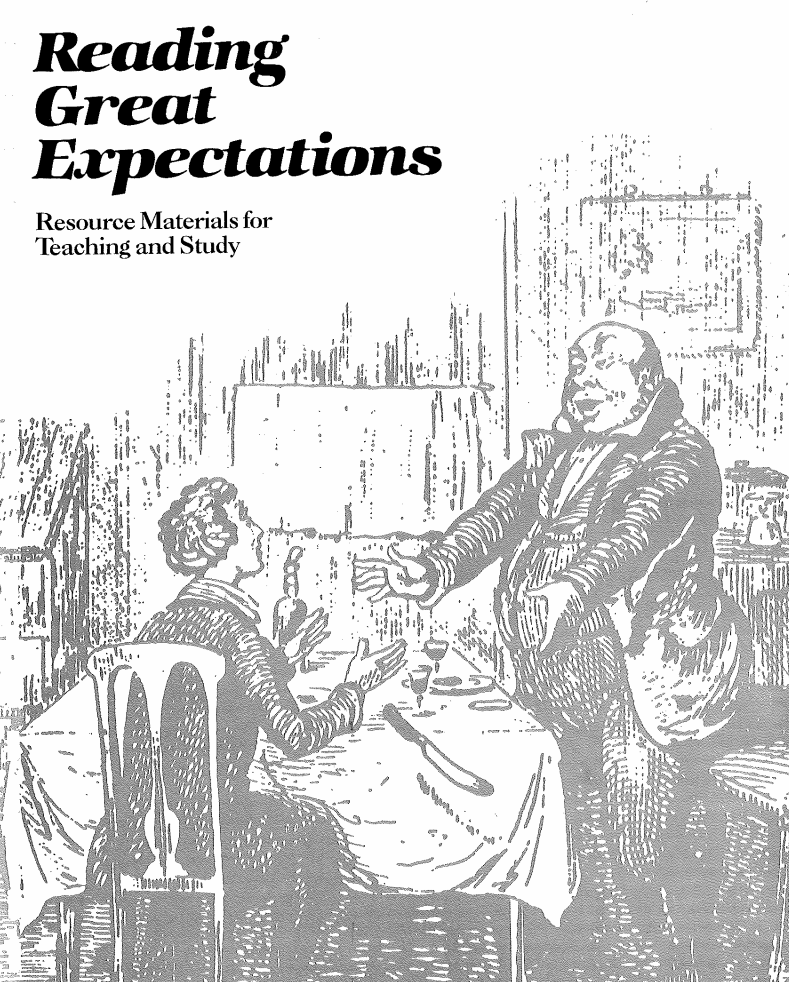Reading Great Expectations
Resource Materials for Teaching and StudyContents
Part I: Creating a Context (92 pages)
This section defines a framework fro the study of the novel. Readings provide a biographical context, and include sections from Dickens’ own autobiographical statement; a selection of background materials on Victorian society as well as a Victorian timeline and slides of Victorian London; and two essays on approaches to teaching the novel. A guided imagery exercise for Great Expectations, rules for “Beggar My Neighbour,” and a general bibliography are also included, as are writing assignments that emphasize setting up and maintaining logs as a way to begin to write about the novel.
Part II: Developing Understanding and Interpretation (130 Pages)
This section focuses on the needs of students and teachers who have started the process of studying Great Expectations. Reading materials include essays on the use of serial publication to teach and read the novel (with a list of the serial publication dates), essays providing representative interpretations–ranging from general statements to specific readings of Great Expectations–and inclusion of the novel’s two endings along with notes and comments on them. Classroom activities provide sample quizzes linked to the novel’s motifs and vocabulary exercises. The section ends with writing assignments, including a chapter-by-chapter approach and computer applications to the process of composition.
Part III: Building Mastery and Integration (112 pages)
The object of the final section is to supplement initial understanding with materials for further reflection and analysis. The section features the complete script of the video, the songs from the video, a playbill, and a discussion of Reader’s theater. Ties between Dickens and other writers (Wordsworth and Melville) are explored in the readings section. Instructions for staging a high tea is among the classroom projects. The exercises provided in the writing component link performance and writing and also seek to extend writing and research beyond this specific novel to other works of fiction, literary criticism, and cultural analysis.

Reading Great Expectations, Resource Handbook for Teaching and Study. Baumgarten, Murray, et al. Santa Cruz: The Dickens Project.
Dominique Bordagaray
Peggy Burkhardt
Angus Calder
Richard Currie
Nan Dorsey
Edwin Eigner
K.J. Fielding
John Forster
Carole Franklin
R.S. Gwynn
Humphrey House
Robert Hughes
John Jordan
Fred Kaplan
Gene Lewis
Sylvia Manning
Janice Merritt
Julie Minnis
Robert Newsom
Robert Patten
Norris Pope
Jane Purcell
Kate Rickman
Carol Robertson
Hilary Schor
Teri Schweitzer
Harriet Skoblow
Gail Starkey
Harry Stone
Marcus Stone
Robert Tracy
Dorothy Van Ghent
Justine Zanjani